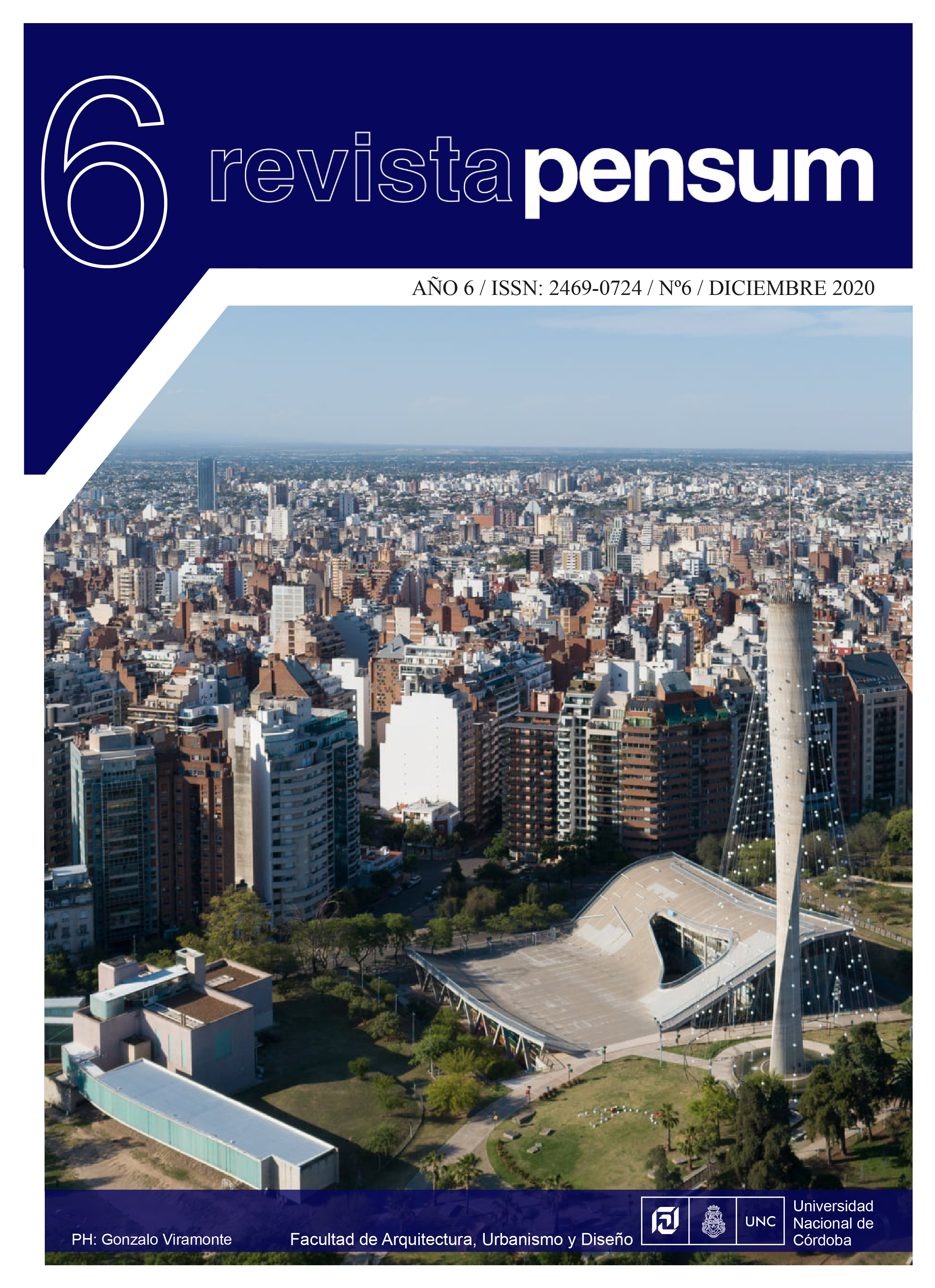El gran Salta en un contexto de metropolización.
DOI:
https://doi.org/10.59047/2469.0724.v6.n6.29390Keywords:
Salta, metropolización, transformaciones, sistemas complejosAbstract
This article develops a brief characterization of the main social, territorial transformations in the Greater Salta Metropolitan Area based on the analysis of current regulations, of censale records, of cartographic images. The study was based on the theory of complexity of systems (Morin, 2009) and the multidimensionality of socio-urban-environmental variables that interrelate in the conformation of habitat, and that allow to identify certain singularities of the metropolitan process of the Great Salta. The methodology of applied research oscillates between the interpretation and the abstraction of the object of study -the history and facts- as witnesses of the urban transformations of the city. The work translate the need to reconstruct the concept of "urbanity-territory" from the complex systemic approach of the city, far from the static equilibrium, open to its environment and to social consensus as a key to equity and urban sustainability.References
Aguero, G. H. (2013). Transformaciones urbanas, Formas de construccion de acceso y de habitabilidad de la ciudad. La Merced Chica y El Encon Chico Salta 1995-2012. X Jornadas Sociologia. Salta: Acta Academica Facultad Cs Sociales X Jornadas Sociologia. UBA http://www.aacademica.org/000-038/84.
Aguilar, M. S. (1997 - 2007 - 2009). Transformaciones e improntas urbanas en el espacio local. El caso de Vaqueros, Salta. VI Congreso Chileno Antropologia. Cuaderno Urbano. Espacio Cultura y sociedad. Vol 8 Dirección estable:https://www.aacademica.org/vi.congreso.chileno.de.antropologia/51, 159 - 180.
Aguilar, M., Sbrocco, M., & Alvarez, S. (1997). Sectores Populares urbanos y calidad de vida. El caso de ls loteos economicos en Salta. Cuadereno numero 5 Facukltad Humanidades UNSA, ISSN 0327-8115.
Aliste Almuna, E., Almendras Varela, A., & Contreras Alonso, M. (2012). La dinamica del territorio en la conurbación Cocepción Talcahuano: Huellas urbanas para una interpretacion de las transformaciones ambientales de la segunda mitad del siglo XX. Geografía Norte Grande. Universidad Catolica de Chile. Santiago URI: http://repositorio.uchile.cl/handle/2250/117863, 5-18 Revista de Geografía Norte Grande, 52: 5-18 (20125.
Barberousse, P. (2008). Fundamentos teoricos del pemsamiento complejio de Edgar Morin. Cost frica: Revista Educare Vol XII Numero 2 pp 95-113. Universidad Nac, heredia.
BID, D. . (2012). Plan Estreategico Metropolitano Gran Salta. Desarrollo Area Metropolitana del Interior BID. Salta: BID - Gobierno provincia de Salta.
BID, P. d. (2010). Plan Desarrollo Estrategico Salta 2030. Salta: Gobierno provincia de Salta.
DAMI, M. (2016). Desarrollo Areas Metropolitans del Interior. Programa DAMI. Salta: DAMI.
Gomez Gavazzo, C. (2005). Metodología del Planeamiento Territorial. Montevideo: Instituto de Teoría de la Arquitectura y Urbanismo. Montevideo.
IGC, G. P. (2015). LEM Lineamientos Estrategicos Metropolitanos para el Area Metropolitana Valle de Lerma. Salta: IGC - Gobierno Provincia de Salta.
INDEC, I. (2010). CENSO NACIONAL DE POBLACION, VIVIENDA Y HOGARES. ESTADISTICA CENSO 2010. Salta: INDEC.
Ministerio Interior Bogota. (2013). Ley Areas Metropolitanas N 1625. Bogota, Colombia: Ministerio Interior - Gobierno Bogota.
Morin, E. (2009). Introduccion Al Pensamiento Complejo (Vol. I). Barcelona, Barcelona, España: Gedisa.
Municiipalidad, C. S. (2017 - 2019 (en revision)). Plan de Desarrollo Urbano Ambiental II. Salta: Municapalidad de la Ciudad de salta.
Municipalidad Ciudad salta. (2005). Plan de Desarrollo Urbano Ambiental de la Ciudad de Salta I (PIDUA I). Salta: Municipalidad de la Ciudad de Salta.
Rabey, M., & Jerez, O. (1999). Procesos de Urbanizacion en Argentina. La mirada antropologica. San Salvador de Jujuy: Editorial Universidad Nacional de Jujuy.
Salta, M. C. (2015). Salta, Sostenible, Resilente, Competitivay Sustentable. Salta: Municipalidad Ciudad Salta .
Sampieri, o. (2010). Metodología de Investigación. MEXICO, MEXICO: McGRAW-HILL / INTERAMERICANA EDITORES, S.A. DE C.V.
Downloads
Published
Issue
Section
License
Copyright (c) 2020 FABIOLA CRISTINA CARRIZO

This work is licensed under a Creative Commons Attribution-ShareAlike 4.0 International License.
Authors who publish in this journal agree to the following terms:
a. Authors retain copyright and guarantee to the journal the right to be the first publication of the work as well as licensed under a Creative Commons Attribution-ShareAlike 4 license.
b. Authors may separately establish additional agreements for non-exclusive distribution of the version of the work published in the journal (e.g., placing it in an institutional repository or publishing it in a book), with an acknowledgement of its initial publication in this journal.
c. Authors are permitted and encouraged to disseminate their work electronically (e.g., in institutional repositories or on their own website) before and during the submission process, as this may result in productive exchanges, as well as earlier and greater citation of published work (See The Effect of Open Access).
d. 4.0 International Creative Commons Attribution-ShareAlike 4.0 License.












